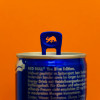How did archaeology break new ground in 2024?
Interview with
What were some of the groundbreaking moments in the field of archaeology? To find out, Chris Smith took a trip down to Queens’ College Cambridge to meet anthropologist Emma Pomeroy…
Emma - Yeah, I mean I was really spoiled for choice really with picking some studies. But this one was quite an important one. Looking at cave art from Suluwesi and trying to redate it. I mean, cave art is notoriously difficult to date. And essentially you have to date the layers of calcium carbonate that form over the top of it. And they've done this with some beautiful panels from two different sites and dated them to over 50,000 years, which is really quite remarkable. I mean, we probably think of a lot of cave art as being European, but this is showing some of the oldest that we have is actually from Southeast Asia and we have representations of animals and kind of panels and scenes that perhaps suggest there's some kind of narrative behind the work.
Chris - What does that tell us then about what we think was happening to anatomically modern humans in terms of how we were evolving thought processes, society and so on? Because we can get a lot out of what people were doing and drawing presumably in terms of those deductions.
Emma - Yes. Especially with this kind of art where they are representing sort of figures and animals. There's a real suggestion of narrative and storytelling. And this is something that we think is probably really important in human evolution and in the evolution of homo sapiens, our own species, and really recent human evolution as a way of sort of bonding groups together, but also passing on knowledge. And the fact that it comes from Southeast Asia is really exciting as well because a lot of people sort of up until about 20 years ago, assumed these figurative arts panels were really something European and associated with what we call the European upper Paleolithic, which is sort of the kind of stone tools that the earliest modern humans were making. So very exciting to have this from so far away from what many have considered to be the heartland of this kind of art.
Chris - What does this do to our understanding of our 'out of Africa' origins? Because certainly when I first started learning about paleoanthropology and so on, people were very fixed on the idea that about 50,000 years ago, that's when we began to leave Africa and go around the world. Well, if we've got this kind of level of detailed art already established so far from Africa, that must put the kibosh on that story a bit then.
Emma - So we still have dates for around, say, 50,000 years for dispersals of modern humans into Europe. But actually the dates that come from Southeast Asia, parts of China very famously Australia as well tend to be in this earlier period of 60,000 or even earlier.
Chris - The other thing that you've picked on is another paper, which fascinated me as the sort of doctor and infectious diseases person that I am. You've got this paper on tooth enamel and using that to work out what a person's immune system was doing and therefore what sorts of things they might have been succumbing to or diseases they may have been fighting off.
Emma - Yes, this was a really fascinating paper. Coming from a team led by Tammy Buenasera and colleagues from the University of California at Davis. And they focused on the remains of indigenous people from a site in California dating to the late 18th century. Basically, they looked at the tooth enamel and sometimes we do this quite often today to try and tell the sex of the people, but they also looked for signs of immune proteins such as immunoglobulin G and something called C-reactive protein. And these are signs of inflammation. So a stress response is happening in the body.
Chris - Why would those things be in the tooth enamel?
Emma - Because they're in the serum, so circulating in the blood, and then while the tooth is forming, they are also captured in the enamel. And what's really interesting about tooth enamel, unlike the rest of the skeleton, which sort of gets replaced periodically over the years, tooth enamel doesn't. So it kind of captures a snapshot about the individual at the time they're forming those teeth, so during their childhood.
Chris - This presumably gives us an insight into the kinds of things those people might have been succumbing to or the disease burden really at that point in their life.
Emma - Absolutely. So they don't have quite the same simple pattern as tree rings do, but you're right, they're kind of incremental structures, so structures that are forming bit by bit. And so these results are showing us something about the lived experience of those people. And quite surprisingly. So interestingly, they were able to show by comparing the remains of indigenous people in the 18th century with those of European descendants from the same kind of area and also a more recent kind of donated teeth, that those from the indigenous communities were suffering much higher levels of physiological stress. So they were finding more of these immunoglobulins and more c-reactive proteins, which was suggesting that they've perhaps got a higher disease burden or higher levels of other stresses. And this is really exciting because it's suggesting that we can have another window onto understanding how people's lives were and the kind of experiences they had.










Comments
Add a comment